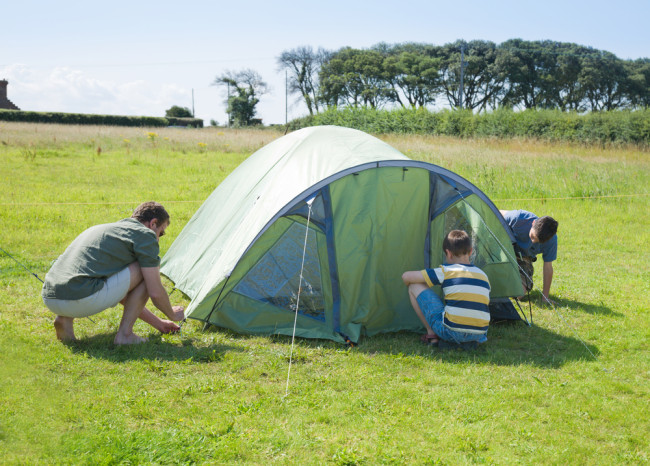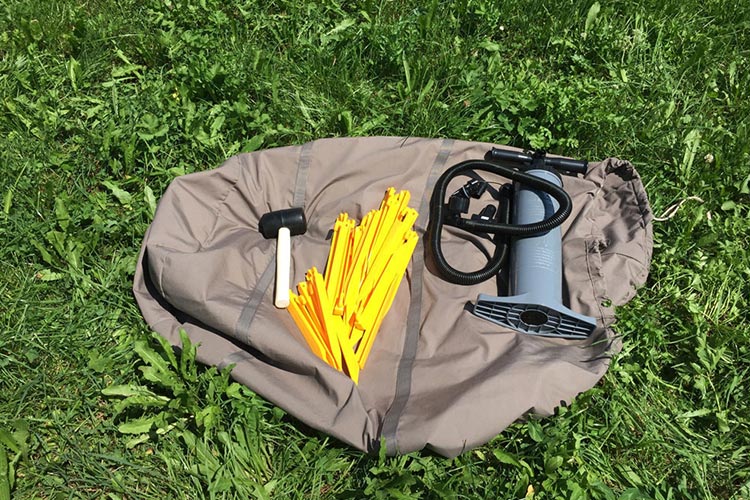
There is one aspect of camping that is often forgotten but is absolutely essential – pitching your tent before you go away on a camping holiday.
So many campers pack away their tent in the loft when they get back and just leave it there until it's time to go camping again, but this is perhaps one of the worst things you can do. Imagine getting to the campsite, pitching up and realising there's a dirty great rip in your tent. Not ideal at all.
Read more: The Ultimate Guide to Tent Repair & Maintenance
Putting up your tent beforehand is not just a time to check for faults, but it’s also a great time to plan, learn and ensure you haven’t forgotten anything, so that you can make the most of your outdoor holiday.
And it's not just older tents you need to check. When you buy a new tent, you expect everything to be hunky-dory - no stitching problems, no leaks, no missing items - but, unfortunately, the odd problem can occur at the manufacturer's end - whether it’s something as little as missed stitching on a bedroom toggle or as detrimental as not taping a seam to prevent any leakage.
Here are our key factors to consider when pitching your tent, prior to your camping holiday:
Check everything is included and that you’ve got everything you need. Prevent the unthinkable!
Simple but effective. You may think this is stating the obvious, but you'd be surprised the amount of times campers have forgotten a set of pegs or, as is becoming more and more common, a pump for their inflatable tent. If you’ve ever experienced this – we're sure you’ll completely agree how important it is to check that you have everything you need - inner tent, pegs, poles/pump, mallet, etc.
Read more: Inflatable Tent & Air Tent Buying Guide
A Scenario to Avoid: You’ve been planning a week away in Cornwall with your family in your new tent for months. The site’s been booked, time off work has been arranged, all the plans are in place. You set off from your home up in the North West and begin your 7 hour descent, down to the South West of England. After an exciting but, let’s face it, incredibly long journey you arrive at the site, roll out your tent (at this point, the kids are excited) and your realise your poles are still lying in your garage over 300 miles away. Cue sobbing/expletives.

Get to know your tent - make it your best friend, not your enemy
Make your campsite neighbours jealous of how simple you make pitching your tent look. Getting your tent out in your garden or on a nearby field will allow you to find the best methods of how your tent will erect. There are always general instructions to follow when putting up a tent, but it's best to find a way that suits you and your family. Get the kids involved and give them certain jobs so they can help out and know what they're doing when you get to the campsite. Practice makes perfect!
A Scenario to Avoid: It's your first camping trip and you arrive at the very popular (but somewhat breezy) Shell Island with an idea in your head of how to pitch your new tent. You confidently begin to roll out your tent with a smile on your face, excited to crack open a beer and enjoy a sit down. You soon realise you’ve created a make-shift parachute and your other half sees sides to you they've never seen before (even after 10 years).
Check your tent is leak-free
Simply pitch your tent, get out the hose pipe and give the seams a good soaking on a light spray setting. This takes a little time, but is worth it to prevent what is undoubtedly one of the worst camping experiences you can have. There can be the odd time where manufacturers have missed a seam that needs taping or a small area that still needs sealing e.g. a Velcro tab – in this case, Winfields will provide a tube of seam sealant to rectify the problem.
Read more: How to correctly pack away your tent
Don’t forget, if you have a polycotton tent that's brand new, chances are that you’ll still need to ‘weather’ the material and seams. This is a process of up to 3 wetting and dryings that will allow the cotton thread to expand where the needle has pierced through the polycotton fabric to create the stitching.
A Scenario to Avoid: It’s 1am in the Lake District and the heavens begin to open (you can see where this is going…). Your nice new tent carpet becomes a sponge, your kit is soaking and the weather is that bad – you have to wake up the kids and simply retreat to your car.
After looking at all your kit and testing it, you may find that there are a few things you still need – but at least you can rule out any problems and concentrate on having a fantastic camping experience.
If you would like any help or advice about checking your tent before you go camping, please feel free to get in touch.






